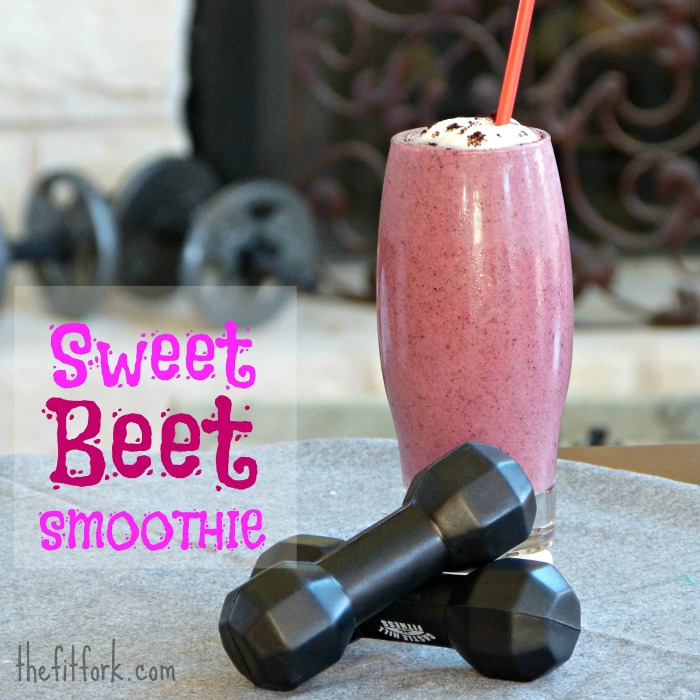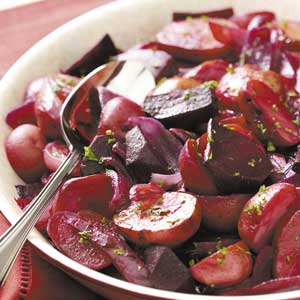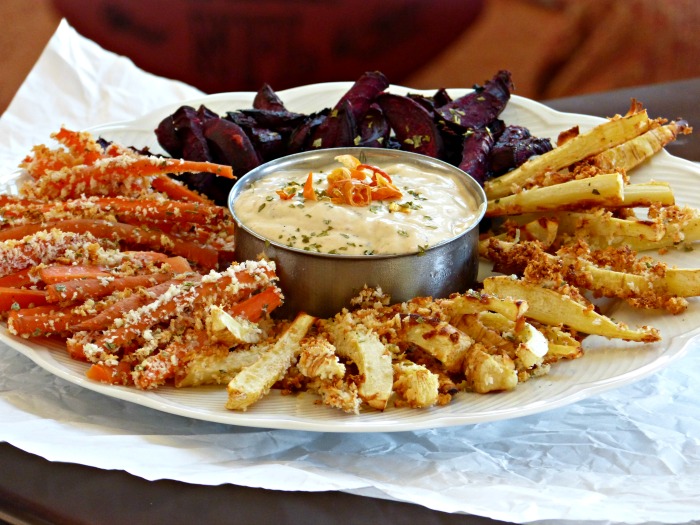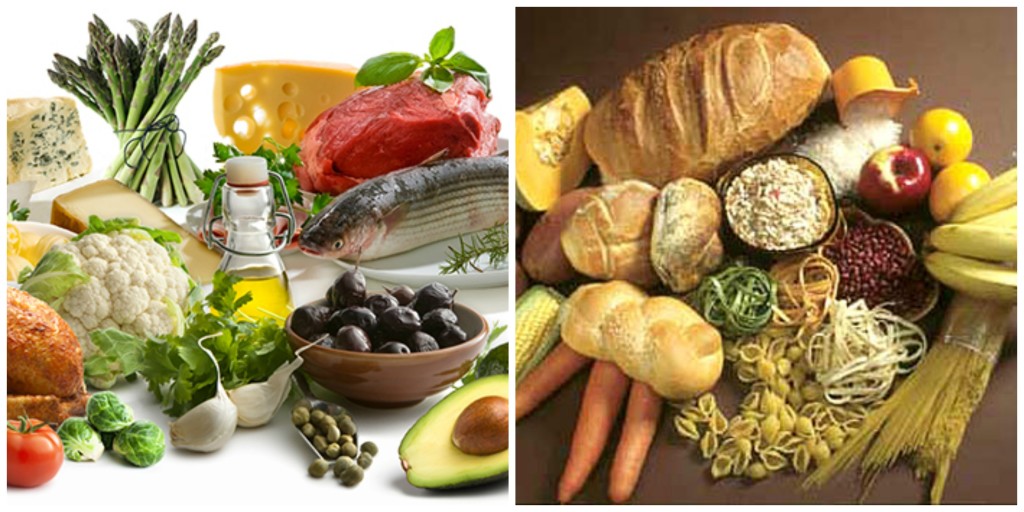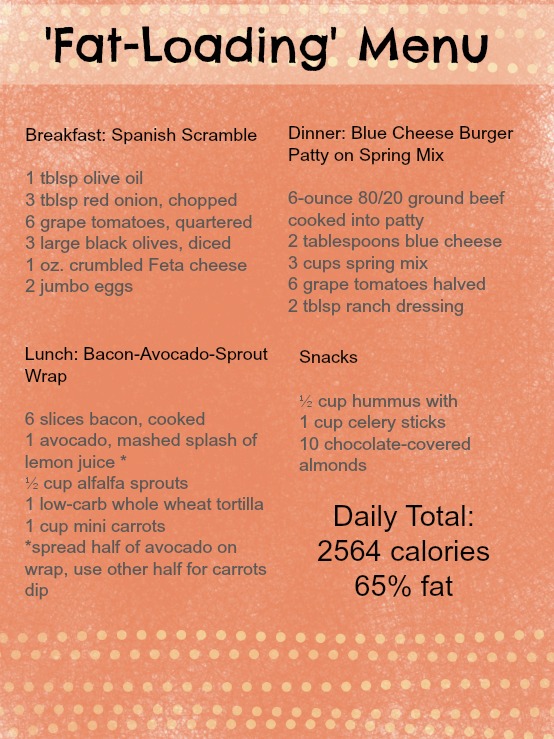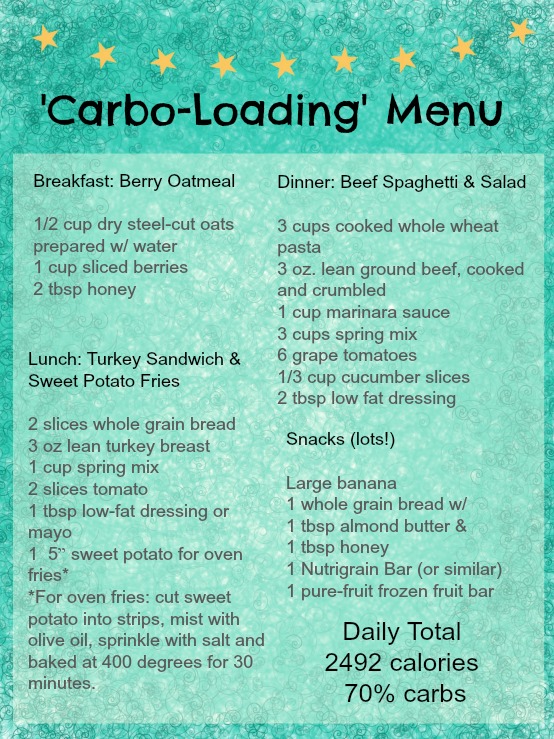Updated: I recently came across Beet Powder and I love it! So much more economical than buying bottled juice and waaaaay less messy than trying to use the juicer at home.
If you want to perform to your highest abilities in a sport, you have to train right and eat right. While your diet can’t replace putting in the miles, the weight-training, or the drills, it can help support your ability to achieve peak performance. In addition to many other nutrients, our bodies require ample lean protein to aid in muscle growth and recovery, proper hydration to replace fluids lost during exercise, and quality carbohydrates to give us some get-up-and-go. When it comes to carbohydrates, the best choices are unprocessed, complex carbohydrates like fruits, vegetables and whole grains.
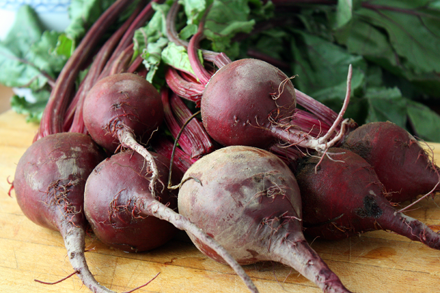 One carb that has amazing health benefits is the beet. If you love this root vegetable, good for you! If you are not such a beet fan, there are easy ways to sneak some beet into your diet that you’ll hardly notice – see my recipes later in the post! You can also drink beet juice; Runner’s World explains the beet juice boost athletes can get in pretty good detail and can tell you how much and when to drink beet juice – basically about 500ml of beet juice a couple hours before a race. It’s the nitrates in the beet juice that do powerful stuff to your blood’s ability to transport oxygen; the more efficient you are at this, the better (in theory) you should perform. Hmmm, can we call this “beet doping?”
One carb that has amazing health benefits is the beet. If you love this root vegetable, good for you! If you are not such a beet fan, there are easy ways to sneak some beet into your diet that you’ll hardly notice – see my recipes later in the post! You can also drink beet juice; Runner’s World explains the beet juice boost athletes can get in pretty good detail and can tell you how much and when to drink beet juice – basically about 500ml of beet juice a couple hours before a race. It’s the nitrates in the beet juice that do powerful stuff to your blood’s ability to transport oxygen; the more efficient you are at this, the better (in theory) you should perform. Hmmm, can we call this “beet doping?”
Here are some other interesting facts from various research studies:
- According to a 2010 study by researchers at the University of Exeter, drinking beet juice helped athletes achieve higher intensity exercise by allowing their muscles to perform the same work with less oxygen.
- The International Journal of Sport, Nutrition and Exercise Metabolism, reported in the February 2012 issue, that highly-trained cyclists were able to shave more than 10 seconds off their 10-kilometer race times after drinking beet juice in a study.
- A 2102 study reported in the Journal of Nutrition and Dietetics reported that whole beetroot consumption acutely improves running performance.
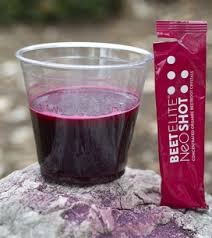 Another great way to go “BeetMode” is by taking the BeetElite Neoshot – I picked up samples of this very interesting product at The Running Event back in December. What’s cool about BeetElite is that it is concentrated, so you don’t have to glug a lot of beet juice – even if you (ahem) like beet juice, you don’t want a sloshy stomach when the start gun goes off. This stuff actually tastes pretty good and each little serving has the nitrate power of 6 beets and delivers nitric oxide 3 times faster, according to the manufacturer Neogenis Sport.
Another great way to go “BeetMode” is by taking the BeetElite Neoshot – I picked up samples of this very interesting product at The Running Event back in December. What’s cool about BeetElite is that it is concentrated, so you don’t have to glug a lot of beet juice – even if you (ahem) like beet juice, you don’t want a sloshy stomach when the start gun goes off. This stuff actually tastes pretty good and each little serving has the nitrate power of 6 beets and delivers nitric oxide 3 times faster, according to the manufacturer Neogenis Sport.
Feel free to check all this out! But, in the meantime, here are some other pretty compelling facts on why you need to go “BeetMode!” – and don’t miss my recipes at the bottom of the post!
- Beets can help your cardiovascular system. Research shows eating beets reduces the amount of homocysteine, a substance which can contribute to peripheral vascular disease, stroke and heart disease
- Beets are a great source of natural complex carbohydrates, making them fabulous fuel for endurance athletes.
- Beets are high in important minerals including sodium, magnesium, calcium, iron and phosperous. Athletes need plenty of these nutrients to replace those lost through sweat, muscle use and other byproducts of exercise.
- Beets are full of fiber and rich in vitamins including vitamin A, vitamin C, and niacin!
- Beets have been shown to guard against cancer thanks to the pigment molecule, Betacyanin, which give beets that signature red color.
Sweet Beet Smoothie Recipe
- 12 ounces almond milk*
- 1 scoop vanilla protein powder*
- 4 ounces beet juice blend
- ½ cup frozen strawberries
- ½ cup frozen cherries
- 1 Tbs freeze-dried acai powder
Mix all ingredients in the blender until smooth; add ice, if needed, and blend for desired consistency. *Instead of almond milk and protein powder, you can substitute a 11 – 12 ounce bottle of ready-to-drink protein shake, like Core Power.
Can’t Be Beet Salad — I made this recipe several years back for Taste of Home magazine. Drizzled with balsamic dressing, the roasted potatoes and roasted beets make a healthy side for athletes . . . and everyone!
Root Veggie Fries featuring Beets – A trio of root veggies, including beets, are sliced up, sprinkled with panko and herbs, and baked in the oven to crispy-on-the-outside, soft-on-the-inside perfection.

